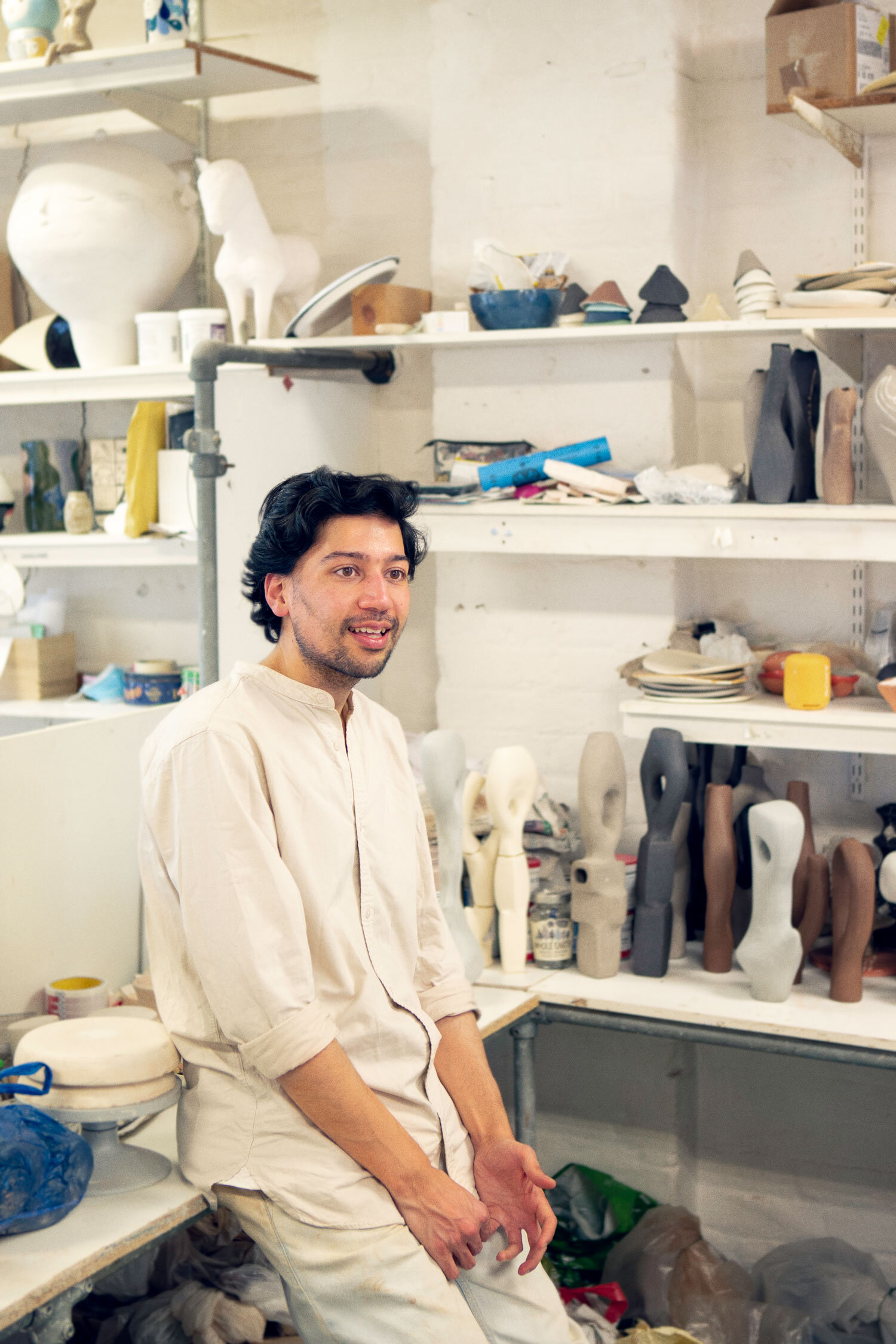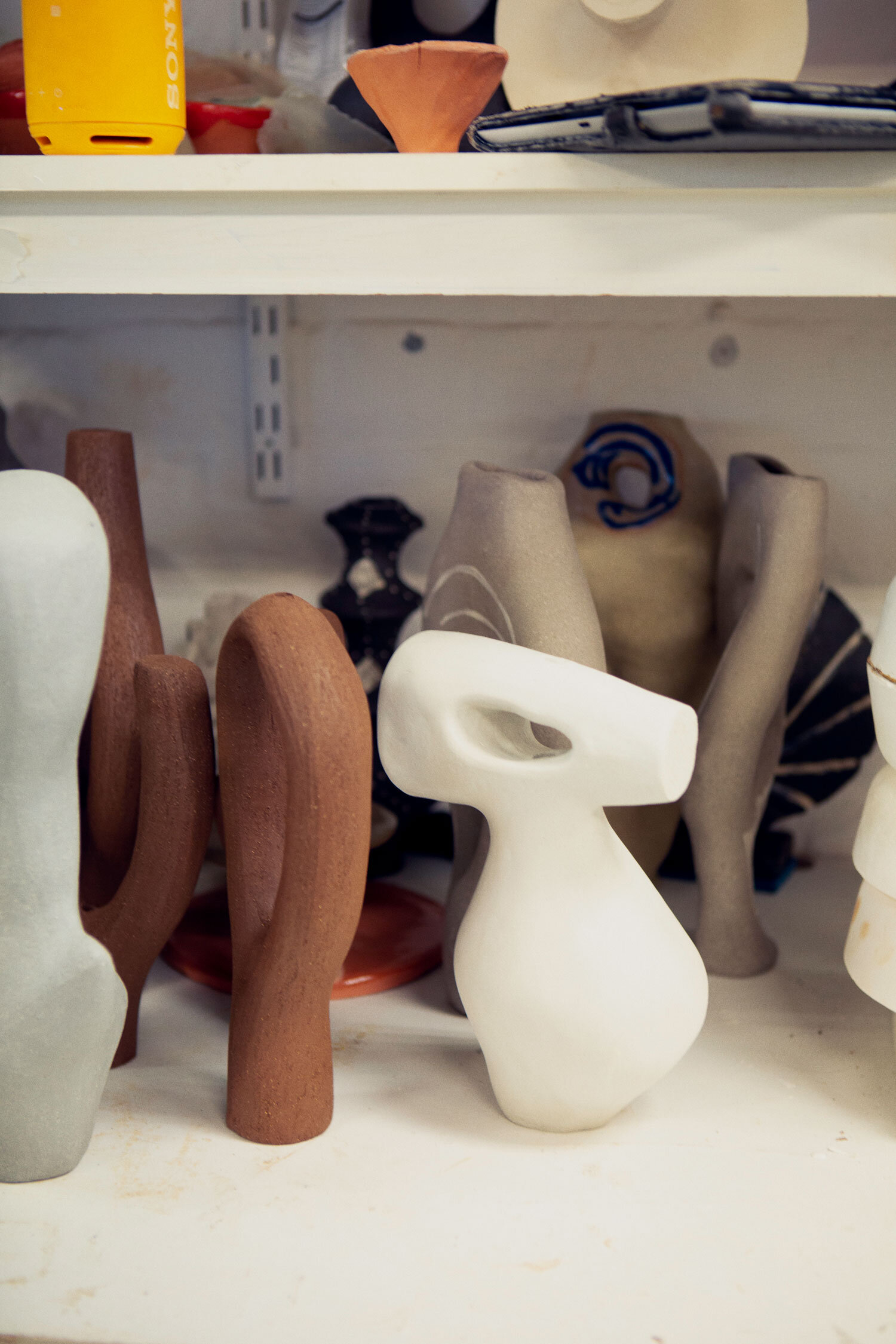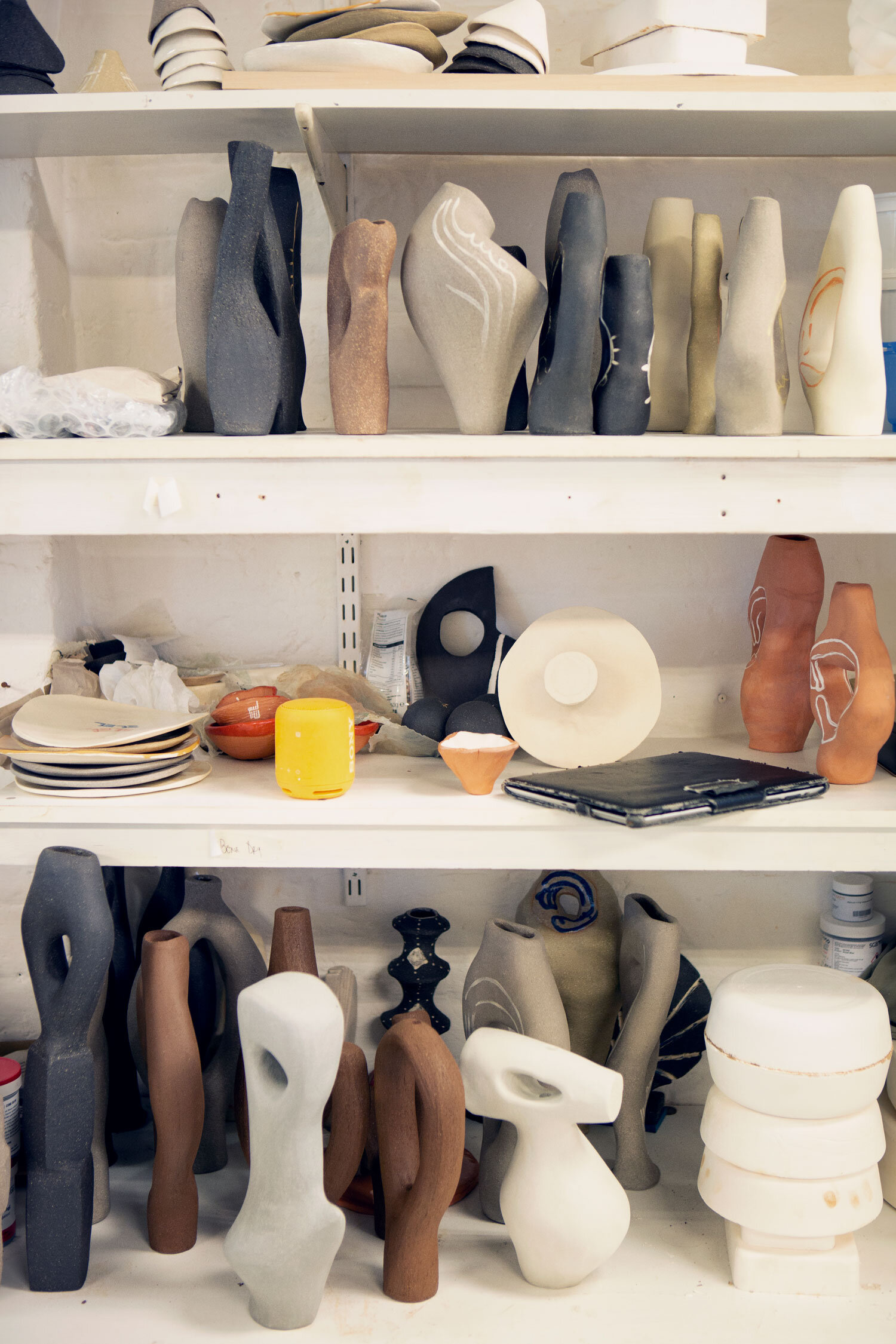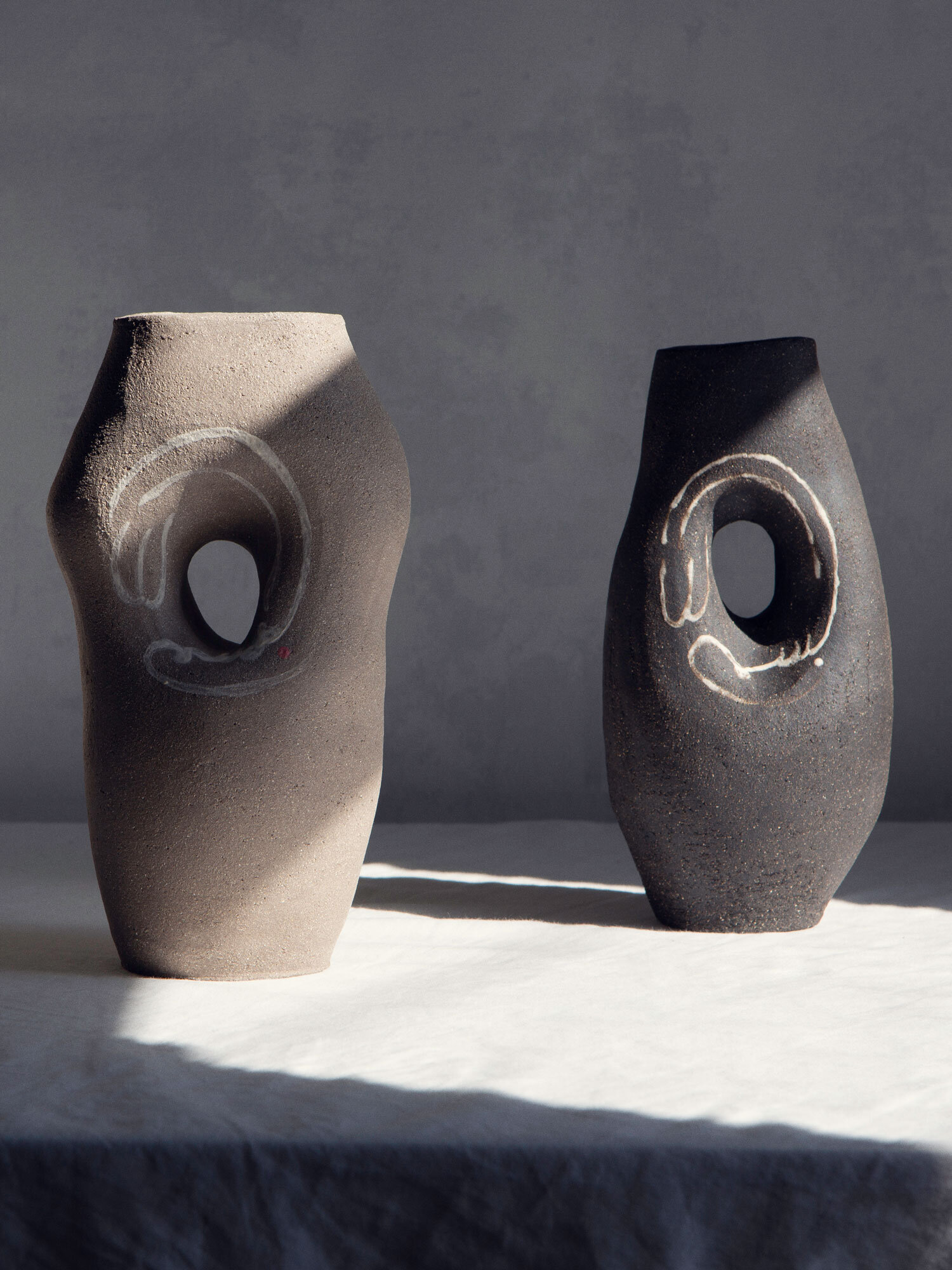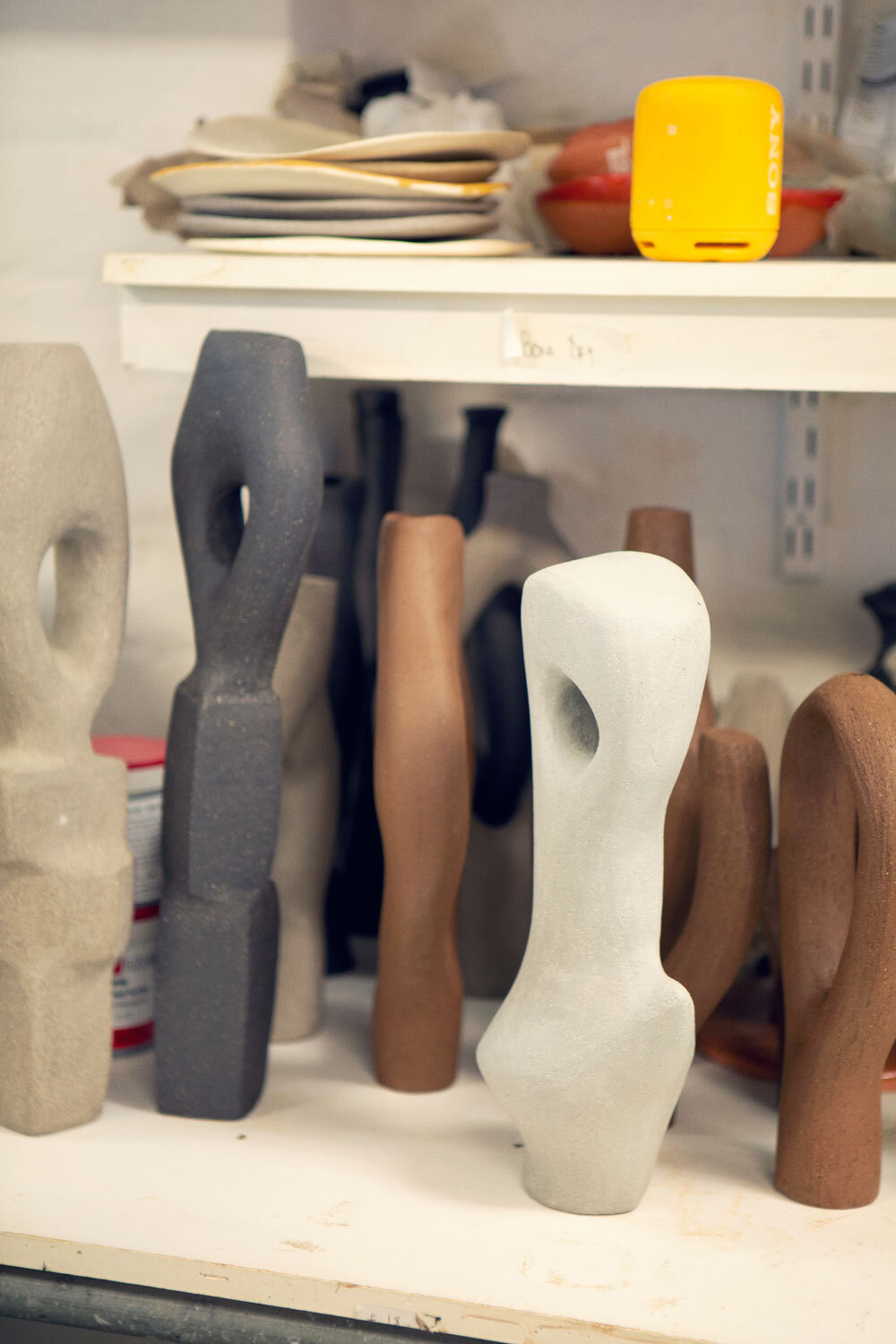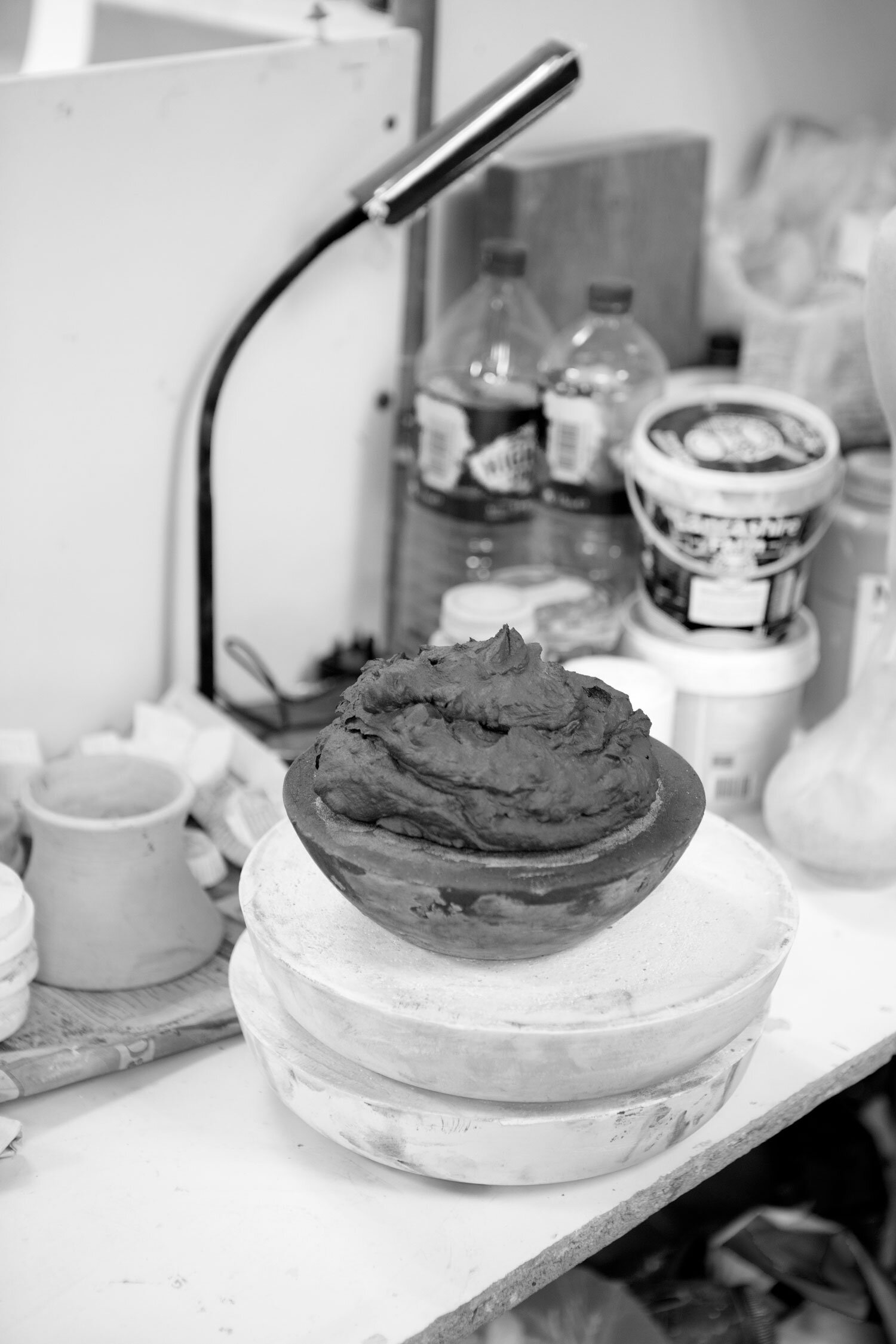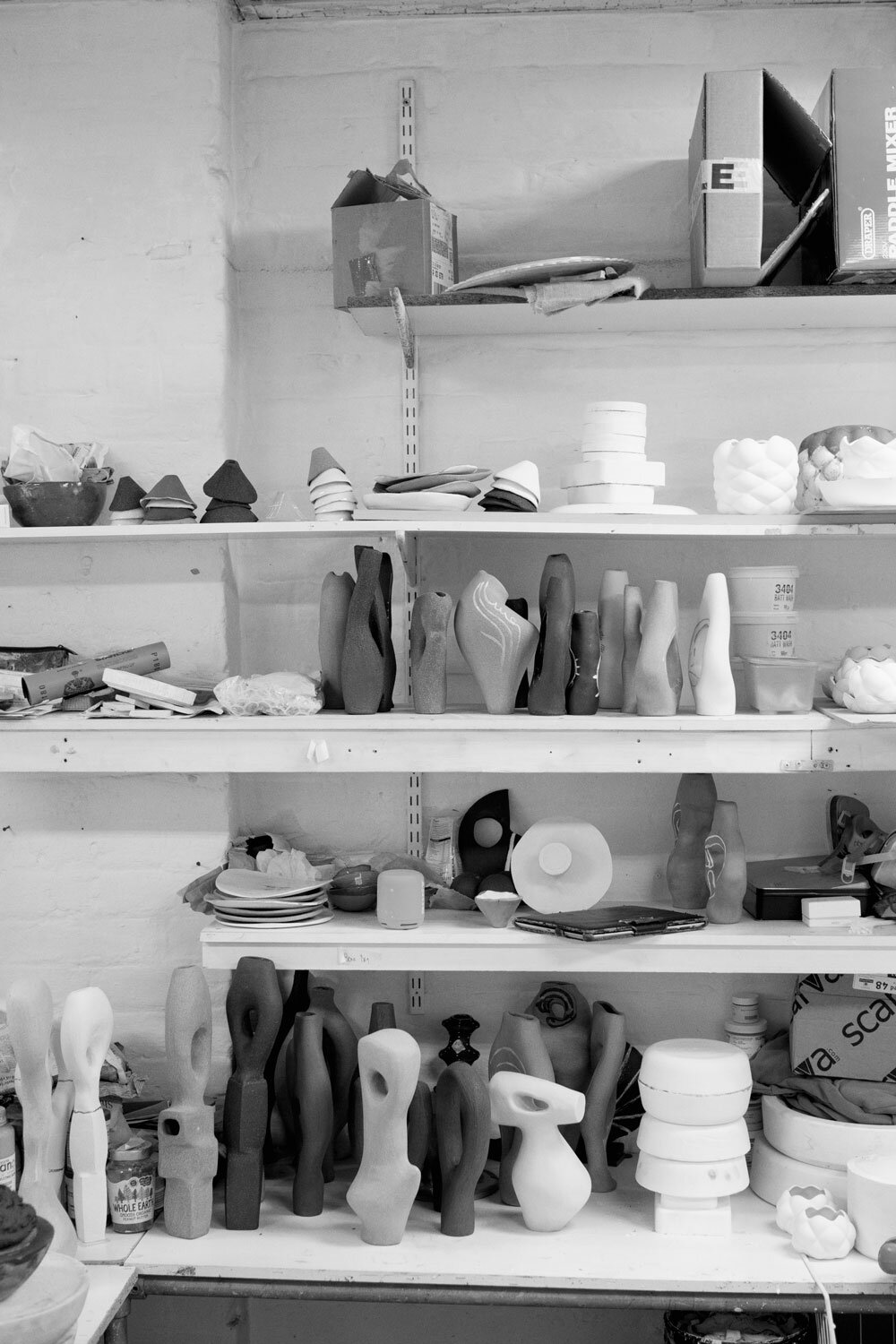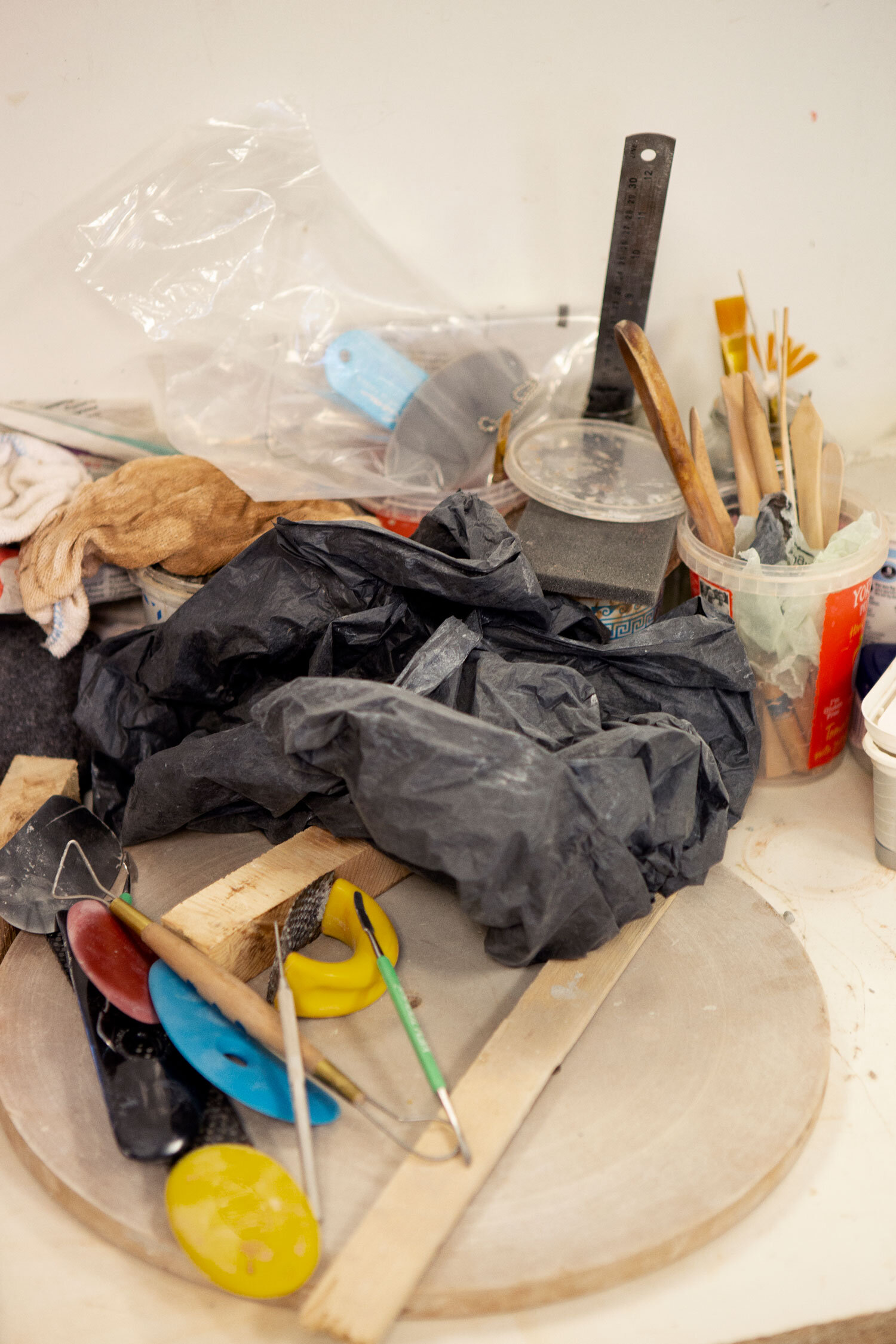Ceramicist Abid Javed translates the microscopic world of molecular biology into a sculptural visual language
“I was looking at it on a screen thinking, “I need to do something with this!” I just knew I needed to give it some kind of physical form.”
Hackney-based ceramic artist Abid Javed is referring to RNA polymerase, a crab claw-shaped enzyme that was shown to him at a recent seminar. Its complex structure is responsible for transcribing, a process that takes place in all living organisms in which DNA sequences are copied into RNA molecules.
As a research scientist by day, Javed predominantly draws influence for his ceramic pieces from the shapes and patterns he uncovers in the intricate world of molecular biology.
“In the current collection, I have this repeating shape based on something called a nucleosome,” he explains. “Its a series of proteins onto which a thread of DNA is wrapped around.”
Through his ceramic practice, Javed is able to translate his findings from under the microscope into a tangible visual language to share these ideas with others.
“My ceramic work is somehow interconnected in such a way that the more my scientific understanding develops, I think that also informs the development of my work in ceramics as well, which is really interesting.”
The artist’s culturally rich upbringing also reveals itself in his work, featuring visual influences spanning Hong Kong, Pakistan and the UK. Javed’s second collection Bismillah is an ongoing series of ceramic pieces that incorporate Arabic script, allowing the ceramicist to “reconnect” with his heritage and interest in Islamic art.
Growing up in Pakistan, Javed’s Mother created objects within the family home, often guided by an idea she’d seen or imagined.
“I remember her buying a piece of glass, shattering it and piecing it together to make a mosaic mirror. I still have really vivid memories of that. So yeah, I think my whole attraction to creativity comes from her.”
After watching David Attenborough’s nature documentaries as a child, Javed’s interest in the natural world began to develop.
“That curiosity of how things work, how nature works. From an early age, I just had something in me that wanted to find out more.”
This innate curiosity naturally led him on to pursue studies in science, and later more specifically molecular biology at PhD level. Inspired by the elaborate formations of living organisms, the research scientist felt drawn to explore these internal structures in further detail.
“When I was studying biochemistry at Manchester University, we had a series of lectures on structures and molecules and I remember that just looking at those pictures of the slides of sections of a cell, organelle and even structures of the molecules, I was just visually drawn to them.”
Now via his ceramics, Javed is able to share the secret inner world of biology that many of us would rarely have the opportunity to see.
“The way I put the analogy is you have the universe, so you have physicists and scientists who are looking at outer space and then you have people like us on the molecular scale that look at things that generally we can’t see apart from a select few.”
Javed reveals he usually receives mixed reactions when he tells people his profession and that he’s come to understands that on the surface science can sound “scary”. He explains this only emphasises the importance of converting his scientific research into a visually enticing medium that’s easy to digest, like ceramics.
“You don't have to be super smart, but you should be open enough to think about or be able to imagine that there is this world that we live in and there are these things that are within us. I thought ceramics would be a nice, aesthetic way for people to connect and have a starting point to think about.”
After taking an initial ceramics class at east London studio Turning Earth, Javed spent the next two years getting to grips with different techniques and materials in what he called “small experiments”.
“They didn’t have to be anything, I wasn’t going to sell them for any purpose, but it was just a way for me to learn how the techniques worked and play with the materials.”
Since the start of his ceramic journey, the artist has developed his own distinctive style which fuses his scientific eye with rustic stoneware textures. He describes how he works using a hand-built process with clay.
“Typically the way I make is so I start with a pinch coil and a ball of clay. Then I start coiling the shape that I want to make and then once that hardens up I start carving and scraping. The piece itself becomes thinner and not as heavy and just feels good when you hold it. For the last step I use kidneys to smooth out and scrape off any extra clay for an even finish on the surface.”
Javed has several markets coming up including the Independent Ceramics Market in London and an exhibition hosted by ceramic curators 1000 Vases in Paris, both in September. He explains how rewarding it is to positive reactions to his work first-hand.
“What I really like is the interaction you get to have with people through your art. Someone comes to you, they look at your work and then they want to find out more. I like that instant interaction with people and being able to explain. I just like that energy.”
Javed’s exceptional ceramic pieces have gained him a sharp rise of recognition at an early and exciting stage of his ceramicist career. This has enabled him to collaborate with a number of photographers and stylists on creative shoots for leading interior publications including Elle Decoration.
“I’m super happy that people are actually getting the work, you know understanding the things behind the pieces. So that for me, makes me really happy.”
Molecular biology remains at the core of Javed’s ceramic work and it’s this distinct fusion of deep-rooted curiosity and scientific discovery that sets his work apart.
“I think people have a soft spot for wanting to find out more. They’re curious, they want to find out, “OK, what's behind this biology schtick?” I think that's why I'm happy that people are responding in that way because that was my aim.”
See Abid Javed’s ceramic sculptures here.

